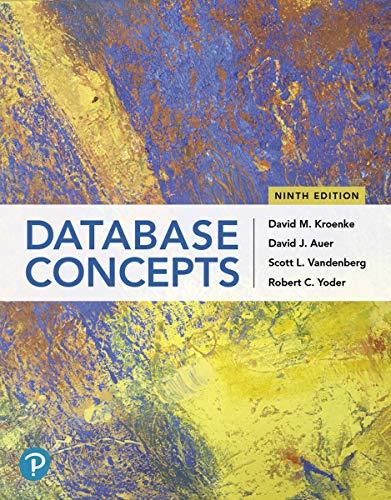Using the Vision Quest Software case study, assume your selected role and imagine you are transitioning from waterfall to agile. This is an experimental process as the company tries to learn how to best implement a new methodology. As the culture shift happens, communicate with your team members to discuss the practices and aspects of agile you feel are important to incorporate into your team. If there are any practices you feel should not be incorporated, provide an argument to your team on why. Focus on your specific role and how the practices will help you be more effective in your job. Ask your team members clarifying questions about their suggestions. Direct your communication to specific team roles as needed. Provide clear feedback to your classmates when they ask questions of your role and the practices you want to have implemented. Work together as a team to accept and adopt at least one practice submitted by each team member.
My role will be a tester OR a developer


Case Study: Vision Quest's Transformation from Waterfall to Scrum A Software Success Story Vision Quest Software is a small and successful U.S. company that develops managed Web applications for the gaming industry. They specialize in flexible, cloud-based software, delivered by a team of 52 from two locations in the United States. Celebrating their tenth anniversary in 2017, Vision Quest has built a track record of delivering value to its customers with applications that have the power to change the way that services are delivered to their customers - and experienced by gamers Given a relatively young company that focuses on innovation and flexibility, you might think that Vision Quest grew up embracing Agile, but that wasn't the case. The company did have a reputation for being responsive to customer needs, but it tried to execute within a traditional project management environment. CEO Cheryl Frederick explains the problems that surfaced as a result of trying to be flexible in a Waterfall environment: "Our best-laid plans were continually being hijacked for short- priority developments. The end result was that we reached a point where we had started lots of things but were finishing very little." This created what Operations Director Linda Ruest refers to as an "illusion of progress" projects were frequently assigned to only one person, so the work "often took months to complete." From a development team standpoint, this approach created individual expertise and worked against a team environment. People were seen as specialists, and some developers had a large backlog of work while others had insufficient work - but they were unable to assist their colleagues because they didn't have that specialist knowledge. This created individual silos and led to lack of variety as well as boredom and low morale. From a company standpoint, it also led to poor skills coverage, with multiple "single points of failure" in the development team Ready to change Fortunately, Vision Quest recognized that the situation wasn't ideal. When an opportunity to develop a brand-new product with brand-new technology presented itself, the staff was enthusiastic about trying a new approach. While there was some discussion of hybrid project execution approaches, the decision quickly came down to using Scrum or continuing with the traditional Waterfall-based method that the organization had in place A number of people on the development team were interested in Agile. One of them, Curtis George, decided to do something about it. Without really knowing what to expect, he booked himself on a Certified ScrumMaster (CSM) course. At the end of the course, Curtis was not only a CSM but a "complete convert." He presented his experience to the rest of the development team and convinced Vision Quest to provide them with CSM training, with similarly positive results. As part of the development team the lead tester, Bruce Morgan decided to take the initiative and embrace the Agile process. He decided that the role of a software tester in an Agile environment goes beyond "just testing" and logging bugs. It is more working as part of a development team and working closely with the product owner. He implemented policies for the testers to work with everyone in the team in order to improve and build quality into the product as early as possible The management had a vital role to play in the decision to use Scrum. "The company's management team really grasped the concepts of Scrum and had the foresight to see how it could transform the way they delivered our projects, and moved decisively," he explains. Clearly the environment at Vision Quest was ripe for change. There was a general recognition that the current method of executing projects wasn't working, combined with a potential solution in Scrum that all levels of the organization felt would offer tremendous benefits. However, enthusiasm for a new approach is not enough in itself success has to come from the results








